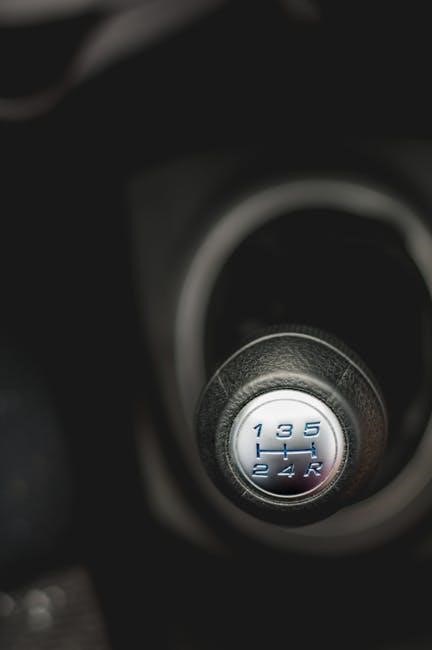Rebuilding a manual transmission typically costs $1,200 to $4,500, depending on parts and labor. It’s a cost-effective option for moderate damage, often cheaper than replacement, and sought after for its affordability and efficiency when performed by skilled professionals.
Why Rebuilding a Manual Transmission is Common
Rebuilding a manual transmission is a popular choice due to its cost-effectiveness and practicality. Many drivers opt for rebuilds because they are often cheaper than full replacements, especially for moderate damage. Additionally, rebuilding allows for the repair or replacement of specific faulty components, preserving the rest of the transmission. This approach extends the vehicle’s lifespan without the need for a brand-new unit. It also appeals to car enthusiasts who prefer to maintain their vehicles’ originality. Furthermore, rebuilding is a common solution for high-mileage vehicles, offering a balance between affordability and reliability. This makes it a preferred option for many car owners facing transmission issues.
Benefits of Rebuilding Over Replacing
Rebuilding a manual transmission offers several advantages over replacement. It is generally more cost-effective, with prices ranging from $1,200 to $4,500, compared to $1,800 to $7,000 for a new or used transmission. Rebuilding allows for targeted repairs, focusing only on damaged components, which preserves the transmission’s original integrity. This method is environmentally friendly as it reduces waste by reusing existing parts. Additionally, rebuilding often maintains the vehicle’s authenticity, which is appealing to classic car owners. The process also allows for customization, enabling upgrades for better performance. Overall, rebuilding provides a practical and economical solution for many drivers, making it a preferred choice for addressing transmission issues.
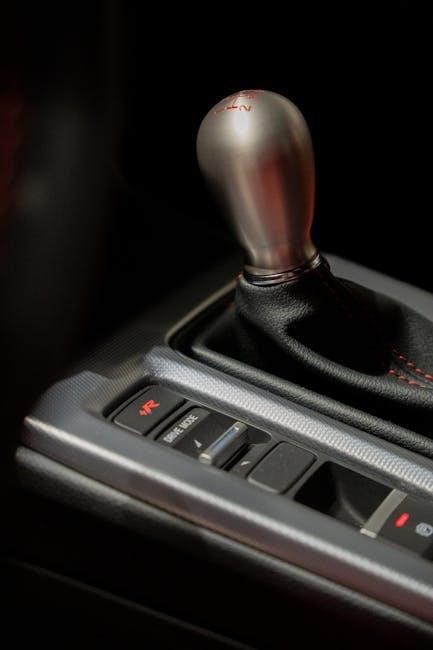
Factors Influencing the Cost of a Manual Transmission Rebuild
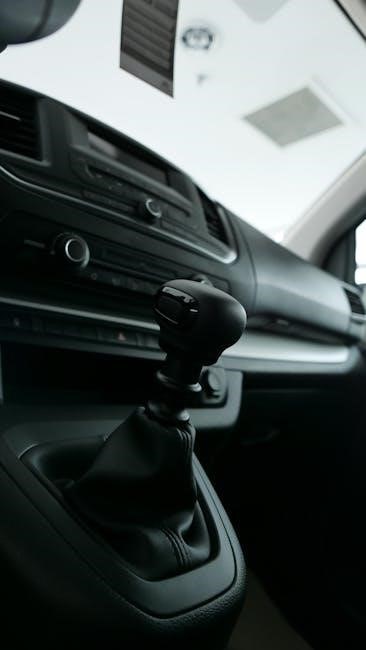
The cost varies based on parts quality, labor rates, and vehicle specifics. High-performance or rare components increase expenses, while location and mechanic expertise also play a role.
Parts and Materials Required
The cost of rebuilding a manual transmission depends heavily on the parts and materials needed. Essential components include gears, bearings, seals, and gaskets. High-quality OEM or aftermarket parts are typically required for durability. Synthetic transmission fluid and new clutch components may also be necessary. Additionally, synchronize rings, gear shafts, and bearings are often replaced to ensure smooth operation. Depending on the transmission’s condition, other parts like the input shaft or output shaft might need replacement. Using premium or performance-oriented parts can significantly increase costs. The availability and source of these components also play a role in the final price of the rebuild.
Labor Costs and Mechanic Expertise
Labor costs significantly impact the price of a manual transmission rebuild. Experienced mechanics charge hourly rates, typically between $75 to $150, depending on their expertise and location. Rebuilding a transmission is labor-intensive, often requiring 10 to 20 hours of work. Specialized tools and a clean workspace add to the costs. Shops with skilled technicians may charge more, but they ensure higher quality work. DIY projects eliminate labor costs but require advanced mechanical knowledge. Amateur mistakes can lead to further expenses, making professional labor a safer investment for most drivers. Regional variations in labor rates also influence the final price of the rebuild.
Vehicle Make, Model, and Year
The cost to rebuild a manual transmission varies significantly based on the vehicle’s make, model, and year. Luxury or high-performance brands like BMW or Mercedes often require specialized parts, increasing expenses. Japanese models, such as Toyota or Honda, tend to be more affordable due to widely available components. The specific model’s transmission design also plays a role; for example, a Honda Civic’s transmission costs less to rebuild than a Subaru WRX’s. Additionally, newer vehicles may require updated or advanced parts, while older models might have parts that are harder to source. Regional availability of parts for certain makes can also influence the final price.

Cost Breakdown for a Manual Transmission Rebuild
A manual transmission rebuild typically costs between $1,000 and $2,500, depending on the vehicle and extent of repairs. Parts alone range from $500 to $1,500, while labor adds $500 to $1,000. Basic rebuilds with minimal parts replacements are cheaper, while complex overhauls with specialized components increase costs. The total price includes bearings, gaskets, seals, and other essential components, ensuring the transmission operates smoothly post-rebuild.
Average Cost Ranges and What They Include
The average cost to rebuild a manual transmission ranges from $1,000 to $2,500, depending on the vehicle and the extent of the rebuild. This includes parts such as bearings, seals, gaskets, and synchros, which can cost between $500 and $1,500. Labor costs typically add another $500 to $1,000, depending on the mechanic’s expertise and location. A basic rebuild with minimal parts replacement may be on the lower end, while a full overhaul with upgraded components can reach the higher end. The total cost also includes cleaning, inspecting, and reassembling the transmission, ensuring it functions like new. Additional fees may apply for specialized tools or overtime.
Parts-Only Costs vs. Labor-Included Costs
Parts-only costs for a manual transmission rebuild typically range from $500 to $1,500, depending on the quality and source of components. This includes bearings, seals, gaskets, and synchros. Labor-included costs, on the other hand, can range from $1,000 to $2,500, depending on the mechanic’s rates and the complexity of the job. Labor costs often account for 40% to 60% of the total bill. While parts-only is cheaper upfront, labor-included provides a turnkey solution, ensuring proper installation and warranty coverage. DIY enthusiasts may opt for parts-only, while most drivers prefer the convenience of labor-included services; Regional pricing and shop rates can significantly influence these costs.
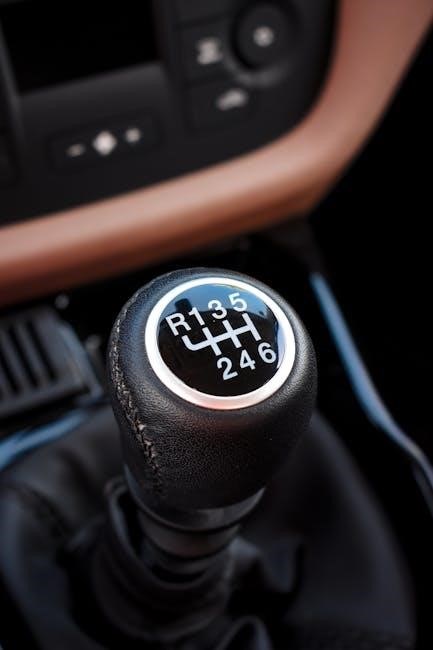
Vehicle-Specific Considerations
Vehicle-specific considerations significantly impact rebuild costs, with luxury brands like BMW and Mercedes often requiring more expensive parts. High-performance or older models may need specialized components, increasing prices.
Cost Differences Between Car Brands
The cost to rebuild a manual transmission varies significantly between car brands due to differences in design, parts availability, and complexity. Luxury brands like BMW and Mercedes-Benz typically have higher rebuild costs because their transmissions often require specialized tools and more expensive components. Japanese brands such as Toyota and Honda tend to be more affordable due to widespread parts availability and simpler designs. High-performance brands like Porsche may incur higher costs due to advanced transmission systems. Additionally, brands with unique or proprietary transmission designs, such as Ferrari or Tesla, often have elevated rebuild expenses. These factors make brand-specific considerations crucial when estimating rebuild costs.
High-Performance vs. Standard Vehicles
Rebuilding a manual transmission for high-performance vehicles is generally more expensive than for standard vehicles due to the use of specialized components. High-performance transmissions often feature advanced materials, such as lightweight alloys or carbon fiber, and intricate designs to handle increased torque and RPMs. Brands like Porsche or Ferrari may require custom parts, raising costs significantly. In contrast, standard vehicles use more common, affordable parts with simpler designs. The labor cost also increases for high-performance models due to the complexity of the rebuild. This makes high-performance transmission rebuilds significantly more costly than their standard counterparts, reflecting the vehicles’ enhanced capabilities and premium components.
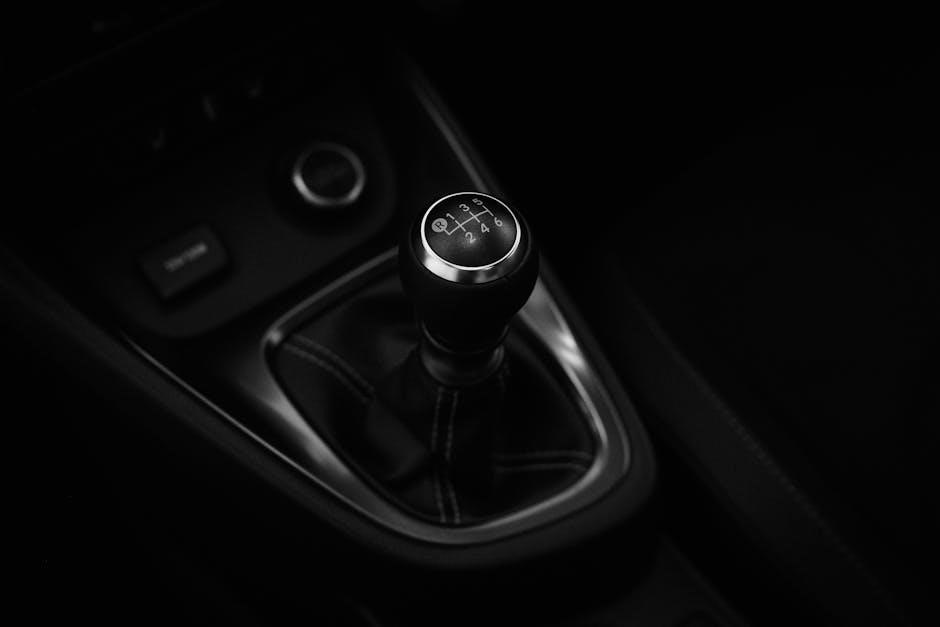
DIY vs. Professional Rebuild
A DIY rebuild saves on labor costs but requires tools and expertise, while professional rebuilds offer reliability and warranties, balancing cost and convenience effectively.
Cost Savings of a DIY Rebuild
Rebuilding a manual transmission yourself can significantly reduce costs by eliminating labor fees, which often account for 50% of the total expense. Parts and tools are still necessary, but DIY efforts can save around $500 to $1,000, depending on the vehicle. However, this requires mechanical expertise and time. The cost savings are substantial for those with the skills, but improper installation can lead to further expenses. Ensure you have the right tools and a clean workspace to avoid complications. While DIY offers financial benefits, it’s not for everyone. Only attempt if you’re confident in your abilities to avoid costly mistakes.
Risks and Challenges of DIY Transmission Work
Rebuilding a manual transmission yourself comes with significant risks, particularly for those without experience. The complexity of the transmission’s design requires precise reassembly, and even small errors can lead to costly failures. Specialized tools are often necessary, and without them, the process can become frustrating and ineffective. Improper installation of components like bearings or seals can result in gear damage, leaks, or complete transmission failure. Additionally, DIY work can be time-consuming, and without a clean, dedicated workspace, parts can easily be lost or damaged. While savings are appealing, the risks of improper rebuilds often outweigh the benefits for inexperienced individuals.
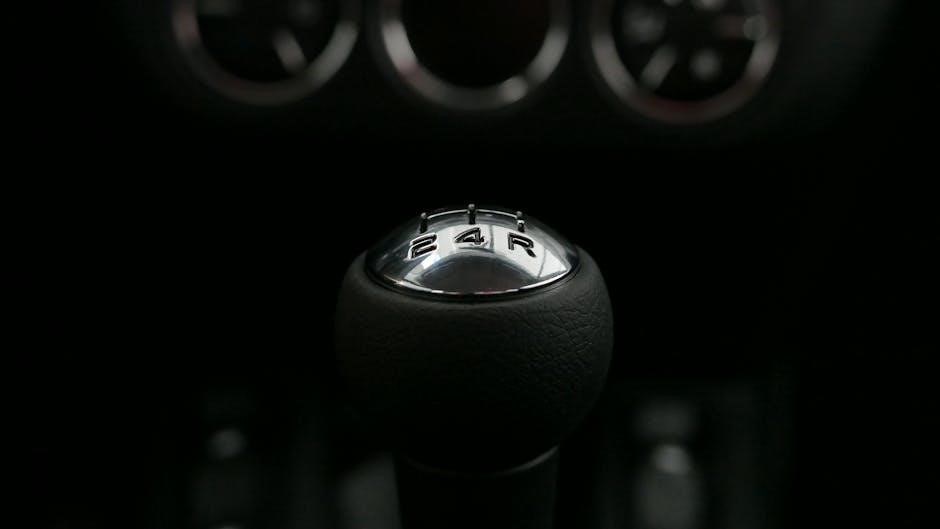
Additional Repairs Often Needed
A manual transmission rebuild often requires additional repairs, such as replacing the clutch, flywheel, or bearings, which can add to the overall cost significantly.
Clutch Replacement Costs
Replacing the clutch is a common additional repair when rebuilding a manual transmission, as wear often occurs alongside transmission components. The cost typically ranges from $500 to $1,500, depending on the vehicle and quality of parts. High-performance clutches or specialized materials can increase expenses. Labor costs for clutch replacement are usually included in the transmission rebuild labor fee if done simultaneously. However, if done separately, expect an additional $200 to $500. Combining clutch replacement with a transmission rebuild can save on labor costs compared to addressing them individually. Always ensure the clutch is inspected during a transmission rebuild to avoid future issues.
Other Related Repairs and Their Costs
Additional repairs often accompany a manual transmission rebuild, such as replacing the flywheel, pilot bearing, or seals. A flywheel replacement typically costs $100 to $300, depending on the material and quality. Pilot bearings and seals are generally cheaper, ranging from $50 to $150. Labor costs for these repairs vary, but expect an additional $100 to $300, depending on the mechanic’s expertise. These components are crucial for proper transmission function, so addressing them during a rebuild is highly recommended. While these costs add to the overall expense, they ensure long-term reliability and performance of the transmission system.
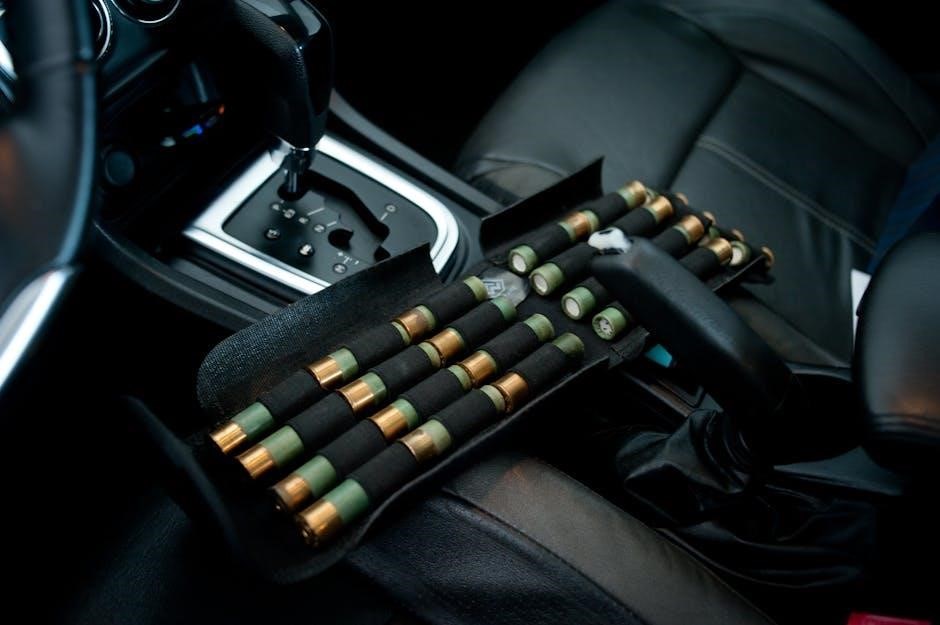
Post-Rebuild Maintenance
Regular fluid checks and filter replacements are essential for maintaining a rebuilt manual transmission. Proper fluid levels and clean filters ensure smooth operation and extend lifespan. Routine inspections can prevent future issues, while adhering to manufacturer recommendations ensures optimal performance and reliability over time.
Importance of Proper Transmission Fluid
Proper transmission fluid is crucial for maintaining a rebuilt manual transmission. It lubricates gears, prevents overheating, and cleans the system. Using the wrong fluid can damage components and reduce performance. Regular fluid checks ensure optimal viscosity and cleanliness. Manufacturers recommend specific fluids for their transmissions, so adhering to these guidelines is essential. Fluid changes are typically needed every 30,000 to 60,000 miles, depending on usage and manufacturer specifications. Neglecting fluid maintenance can lead to premature wear and costly repairs. Always consult your vehicle’s manual for the correct fluid type and replacement schedule to ensure long-term reliability and performance of your rebuilt transmission.
Long-Term Maintenance Tips
Regular inspections and maintenance are key to extending the life of a rebuilt manual transmission. Check for leaks, worn seals, and loose connections periodically. Monitor gear engagement smoothness and listen for unusual noises, as these can indicate potential issues. Keep the transmission mount secure to prevent misalignment. Avoid aggressive driving habits, such as rapid shifting or riding the clutch, which can stress components. Ensure proper alignment during installation to prevent uneven wear. Regularly inspect the clutch and pressure plate for wear, as they directly affect transmission performance. By following these tips, you can prevent premature wear and ensure your manual transmission operates reliably for years to come.
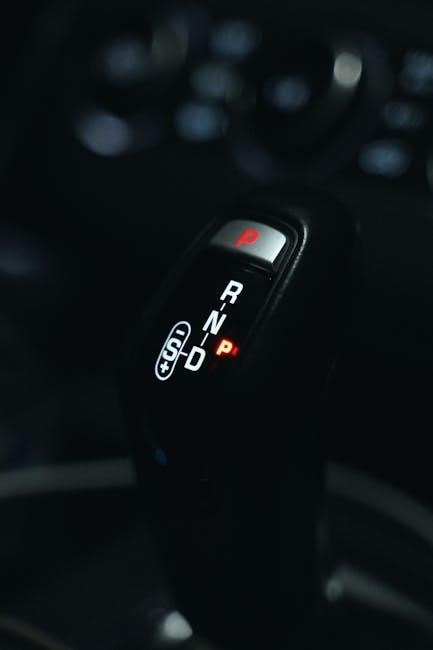
Rebuild vs. Replacement Comparisons
Rebuilding a manual transmission is often more economical for specific repairs, while replacement is better for major overhauls. This comparison helps determine the best option based on damage severity and cost-efficiency.
When Rebuilding is More Cost-Effective
Rebuilding a manual transmission is more cost-effective when only specific components are damaged or worn out. If the transmission casing and main shafts are still in good condition, replacing bearings, seals, and gears can significantly reduce costs. This approach is ideal for minor repairs, such as fixing a faulty clutch or worn synchronizers. Additionally, rebuilding is often cheaper than replacement for high-performance or classic vehicles, where maintaining original parts is crucial. Labor costs are also lower since the rebuild is typically done on-site rather than requiring a new or refurbished unit. This makes rebuilding a practical choice for budget-conscious drivers with functioning transmissions that need targeted repairs.
When Replacement is the Better Option
Replacement is often the better option when the manual transmission has extensive damage or is beyond repair. If the casing is cracked, gears are shattered, or internal components are severely worn, rebuilding may not be feasible. Additionally, if the transmission is outdated or rare, finding compatible parts for a rebuild can be difficult and costly. In such cases, installing a new or refurbished transmission is more practical and ensures reliability. Replacement also saves time, as it eliminates the need for labor-intensive disassembly and part sourcing. For modern vehicles, a replacement transmission may come with a warranty, providing added peace of mind for drivers.

Regional Cost Variations
Transmission rebuild costs vary by region due to labor rates, parts availability, and local demand. Urban areas often have higher prices, while rural areas may be more affordable.
Urban vs. Rural Repair Costs
Repair costs for manual transmission rebuilds differ significantly between urban and rural areas. In urban regions, higher labor rates, increased demand, and a greater cost of living drive up prices. Mechanics in cities often charge more due to overhead expenses like rent and higher wages. Additionally, urban shops may have more specialized tools and certified technicians, which can increase costs but ensure quality work.
In rural areas, labor costs are generally lower, and transmission rebuilds may be more affordable. However, fewer specialists and less access to parts can lead to longer wait times and potentially lower service quality. Local shops may also charge less due to lower overhead, making rural repairs a more budget-friendly option for some drivers.
International Cost Differences
Manual transmission rebuild costs vary significantly across different countries due to labor rates, parts availability, and economic conditions. In developed nations like the U.S. or Germany, higher labor costs and specialized tools drive up prices. Conversely, in countries with lower labor costs, such as India or Mexico, rebuilds can be more affordable. Additionally, import taxes and shipping fees for transmission parts can inflate costs in regions where components are scarce.
Local expertise also plays a role, as skilled technicians in regions like Japan or Europe may charge premium rates. Exchange rates further complicate pricing, making international comparisons challenging. Always consider local factors when estimating rebuild costs.
Final Thoughts on Manual Transmission Rebuild Costs
Rebuilding a manual transmission offers a cost-effective way to restore performance and extend your vehicle’s lifespan. While costs vary based on parts quality, labor, and vehicle specifics, a rebuild is often more economical than replacement. DIY projects can save money but require expertise to avoid costly mistakes. Professional rebuilds ensure reliability and peace of mind. Always research local shops, compare quotes, and consider long-term maintenance needs. For most drivers, a well-executed rebuild provides excellent value, but high-mileage or heavily damaged transmissions may warrant replacement. Weighing these factors will help you make the best decision for your budget and driving needs.
How to Make an Informed Decision
To make an informed decision about rebuilding your manual transmission, start by assessing your vehicle’s condition and your budget. Consider whether the transmission is damaged beyond repair or if a rebuild is feasible. Consider factors like mileage, performance needs, and long-term plans for the vehicle. Compare the costs of rebuilding versus replacing, including parts, labor, and any additional repairs. Research reputable shops or DIY kits if you’re skilled. Read reviews and ask for referrals to ensure quality work. Finally, weigh the benefits of a rebuild, such as cost savings and maintaining your car’s originality, against the convenience of a replacement. Prioritize reliability and your specific needs to choose the best option.
